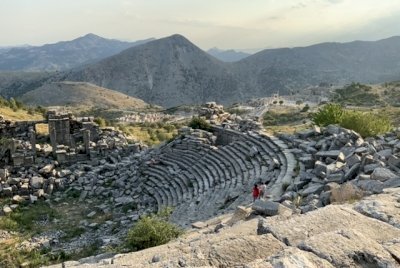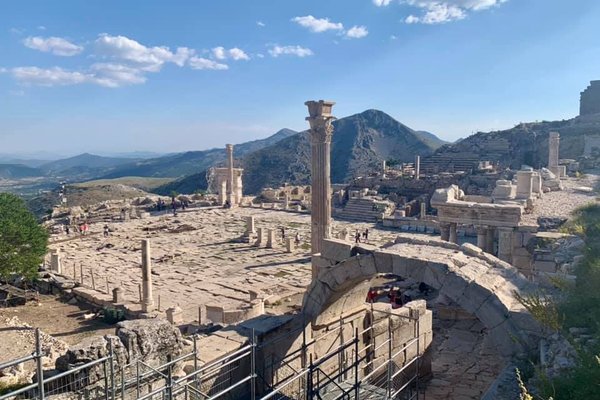Turkiye
Archaeological Site of Sagalassos
Sagalassos was a Roman / Hellenistic town, built on various terraces. It was a center of pottery production, which can be seen in the ruins of kilns and workshops. A recent finding was a colossal statue of the Emperor Hadrian, which is thought to have stood 4-5m in height.
Site Info
Official Information
- Full Name
- Archaeological Site of Sagalassos (ID: 5409)
- Country
- Turkiye
- Status
-
On tentative list 2009
Site history
History of Archaeological Site of Sagalassos
- 2009: Added to Tentative List
- Added to tentative list
- Type
- Cultural
- Criteria
Links
- UNESCO
- whc.unesco.org
All Links
UNESCO.org
- whc.unesco.org — whc.unesco.org
Community Information
- Community Category
- Archaeological site: Ancient Rome
Travel Information
Recent Connections
News
No news.
Community Reviews
Show full reviews
Sagalassos is situated in the Western Taurus mountains, about 120 km north of Antalya, in the Turkish province of Burdur (Ağlasun). The city is embedded in the Taurus Mountain chain, with the Mediterranean Sea to its south and the Anatolian plateau to its north, located in a mountainous terrain with forests, steep valleys and rivers. We visited this tentative UNESCO site in July 2020 after it was reopened following the Corona crisis with the usual health precautions. As it is about 1500 metres above sea-level the temperature was pleasant even in the middle of summer with a light cooling breeze.
It is an archaeological jewel that was blissfully forgotten over the centuries and therefore never really destroyed or looted by force. A protective settlement first set up by the “Sea People” around 1200 BC, it played an important role in the region throughout the Bronze Age, Hellenistic (Seleucid and Pergamon) Roman and Byzantine periods, abandoned after an earthquake in the 7th century with little population left in the subsequent centuries. Rediscovered only in the 19th century, excavated as of 1989 by Belgium’s Leuven Catholic University and partially restored given that large parts of the collapsed buildings remained on site. It has the appeal of Pompeii retrieved from the ground and of Ephesus with its glistening public buildings. Surely a worthy candidate to be put on the world heritage list.
Sagalassos was conquered by Alexander the Great in 333 BC on his way to Persia. After being taken into …
Keep reading 0 comments
